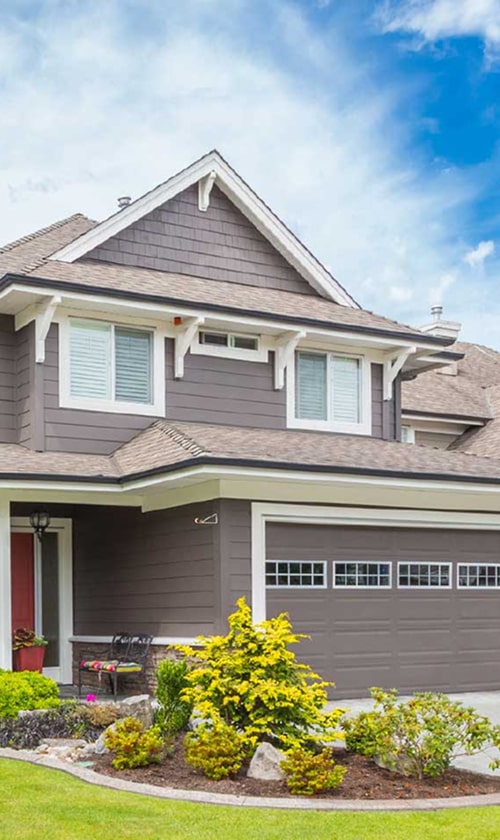It can be hard to choose the right thermostat for our air conditioning system with so many models available today. The best thermostat for our home depends on our needs, the features we want, and our budget. Some options are simple, while others come with smart technology that can help save energy.

We should look at things like programmability, ease of use, and how well each thermostat works with our AC system. By understanding each type, we can make a smarter choice and keep our home comfortable all year long.
Core Functions and Components of Thermostats
Thermostats help us control indoor temperatures and comfort by regulating when our air conditioners turn on or off. Their main parts work together to sense temperature changes and send commands to air conditioning systems.
How Thermostats Regulate Air Conditioning Systems
Thermostats monitor the room temperature and compare it to our chosen setting. When the air gets warmer or cooler than our set temperature, the thermostat sends a signal to our air conditioning unit to start or stop.
This process helps maintain steady indoor temperatures for comfort and efficiency. Many thermostats include features like differential or swing settings, which determine how much the temperature can rise or fall before the AC turns on again. Understanding these settings helps us use energy wisely and avoid frequent cycling of the system.
Our thermostat’s fan settings can also control when the fan runs either always or only when the AC cools the air. Using the auto mode will let the thermostat decide when the fan is needed to keep the room at the set temperature.
Key Components: Temperature Sensors, Control Boards, and Displays
A thermostat has several important components:
- Temperature Sensor: Most modern models use a thermistor to detect temperature, but older thermostats may use a bimetallic strip.
- Control Board: This is the “brain” that processes the temperature reading and sends signals to the air conditioner.
- Display: Digital displays are common now, making it easy for us to read and adjust settings.
Some thermostats also have simple indicator lights, while others let us change settings with push buttons or touchscreen displays.
Temperature sensors need to be accurate to keep the air conditioning system working as we expect. The control board’s main job is to tell the AC when to turn on and off, based on inputs from the sensor and any user settings.
Modes and Basic Thermostat Settings
Thermostats have several basic modes we can choose from. The most common are “cool,” “heat,” “off,” and “auto mode.” In cool mode, the AC maintains our chosen temperature. In auto mode, the thermostat automatically heats or cools as needed.
Basic settings include changing the target temperature, switching the fan between “on” and “auto,” and setting minimum or maximum limits. Some thermostats also let us set a temperature swing or differential to control how much the temperature can fluctuate before the AC turns back on.
It’s important to use these settings to match our comfort needs and to help save energy. Setting the right mode and fan operation keeps our system running smoothly and efficiently.
Types of Thermostat Options for Air Conditioning
Thermostats come in many forms such as manual, programmable, and smart models. Choosing the right type impacts how we control temperature, save energy, and manage comfort in our homes.
Manual and Non-Programmable Thermostats
Manual and non-programmable thermostats are the most basic types. We have to adjust the temperature by hand. There are two main kinds;
- Mechanical thermostats, often with a dial or lever.
- Electronic (or digital) thermostats, which show the temperature on a small screen.
These devices are usually easy to use and have few features. They do not offer scheduling, which means we must change settings each time we want a different temperature. That can lead to higher energy use if we forget to adjust them.
Manual thermostats are best when we want simple operation and don’t mind changing the temperature ourselves. They are affordable and can last many years with little maintenance. However, they are less energy efficient than programmable or smart thermostats.
Programmable Thermostats and Scheduling Features
Programmable thermostats let us set a schedule for the air conditioning to follow. We can plan different temperatures for mornings, evenings, and weekends. This helps us save energy because the system isn’t running more than needed.
These thermostats come in digital or electronic versions. Some models allow daily schedules, while others offer different settings for weekdays and weekends. Energy savings can add up when we use schedules wisely.
We have to spend some time programming our preferred settings. Once set, we don’t need to keep adjusting the thermostat by hand. Programmable thermostats are a good fit if our routine is regular and we want a simple way to cut energy costs.
Smart Thermostats and Connected Controls
Smart thermostats go beyond regular programming. They connect to Wi-Fi, so we can control them remotely with our smartphones or computers. Many work with home automation platforms like Amazon Alexa, Google Home, and Apple HomeKit. This lets us adjust the temperature using voice commands.
Features often include:
- App control for changing settings anywhere.
- Learning capabilities that adapt to our habits.
- Energy saving reports to help us track usage.
- Remote access for extra convenience.
Smart thermostats, such as the Nest Learning Thermostat or ecobee SmartThermostat, can even sense when we are home or away. This boosts comfort and helps avoid wasted energy.
Specialty and Zoned Thermostat Solutions
Specialty thermostats and zoned thermostat systems offer extra control for unique needs. Zoned thermostats let us set different temperatures in separate areas (zones) of our house. This is helpful if some rooms get hotter or colder than others.
There are also thermostats built for specific systems, like heat pumps or radiant floors. Some models work with multi-stage systems or provide special humidity control.
Zoned and specialty solutions can improve comfort and energy savings in larger homes or homes with unique layouts. They can be paired with smart thermostats, allowing us to manage zones from smartphone apps or by voice commands through our smart home devices. Zoned systems are best for those who want maximum comfort and control throughout the house.
Selecting the Best Thermostat for Your Air Conditioning System

To get the most from our air conditioning system, we need a thermostat that matches its features and our goals. By checking compatibility, important functions, and home integration, we can make smarter choices.
Assessing HVAC System Compatibility
We can’t install just any thermostat with any heating and cooling system. The first thing we need to know is if our HVAC system uses line voltage or low-voltage wiring. For example, baseboard heaters often need line voltage thermostats, while most central HVAC systems use low-voltage thermostats.
Older systems might not work with smart thermostats, especially if they lack a C-wire for constant power. It helps to check the HVAC system label or user manual, or even consult a technician before thermostat installation or replacement.
Another key step is to check if we have a heat pump, multi-stage equipment, or need separate controls for heating and cooling. Some thermostats, like heat pump thermostats, are made with extra sensors and wiring for these features.
If we rush this step, we might buy a thermostat that doesn’t work well, leading to wasted time or cost.
Evaluating Essential Thermostat Features
A good thermostat gives us the control and comfort we want. We should look for a digital display, which is easier to read and set compared to older manual dials. Programmable thermostats let us set schedules for weekdays and weekends, so the system runs only when we need it.
Key features to consider:
- Wi-Fi Connectivity: Lets us control the thermostat from our phone.
- Energy Tracking: Shows how much energy is used for better energy conservation.
- Temperature Sensors: Some systems support multiple sensors for more even cooling.
- Humidity Level Sensors: Help us manage indoor comfort, especially during summer.
The U.S. Department of Energy says using a programmable or smart thermostat can cut cooling costs if used properly. We should also think about display size and button layout, especially if anyone in our home has vision or mobility problems.
Utility, Efficiency, and Home Integration Considerations
When picking a thermostat, we also need to see how it fits into our daily life and home setup. Energy efficiency settings, like learning our cooling patterns or using geofencing, can help reduce energy bills while keeping our air conditioning system effective.
If our home already uses smart devices, we may want a thermostat that works with Alexa, Google Home, or Apple HomeKit. This allows easy voice control and automation, adding convenience to our routine.
Some models help track energy use by month, letting us see trends and adjust habits for further energy conservation. Thermostat installation may be simple with certain models, while others need a professional, especially when rewiring is involved.
Matching our thermostat upgrade with our HVAC system’s needs and our living habits is key to getting the most out of our investment.
Maximizing Performance and Energy Savings
Getting the most from our thermostat helps us control our home heating and cooling without raising energy bills. By making smart adjustments and using built-in thermostat features, we can boost energy efficiency and cut waste.
Thermostat Settings and Seasonal Adjustments
Choosing the right temperature settings each season is one of the easiest ways to save energy. In summer, setting our thermostat to 78°F (26°C) when we’re home and raising it when away can help lower utility bills. In winter, we can set it to 68°F (20°C) while awake and lower it when asleep or away.
Programmable thermostats let us schedule these changes automatically. We just need to use intuitive controls to match our daily routine. For those with smart thermostats, adaptive features can learn our habits and adjust for even more energy conservation.
It’s important not to set the thermostat to extreme temperatures, thinking our home will heat or cool faster. Doing this causes our system to work harder but does not speed up the process.
Tips for Energy Efficiency and Lowering Utility Bills
Using energy reports and energy tracking features, we can monitor our usage patterns. Many smart thermostats send monthly summaries showing how much electricity we use and which settings give us the most savings. This helps us spot habits that drive costs up.
Keeping blinds or curtains closed during the hottest part of the day reduces heat gain, so our air conditioner doesn’t work as hard. Ceiling fans help circulate air and let us set the thermostat a bit higher without losing comfort.
Here are a few proven ways to improve efficiency:
- Use programmable settings: Avoid cooling or heating empty homes.
- Seal windows and doors: Prevent loss of conditioned air.
- Limit heat-producing activities: Use ovens or dryers during cooler times.
Maintenance and Troubleshooting for Optimal Results
Regular maintenance by a qualified HVAC technician can keep our system and thermostat working their best. We should change air filters about every 1-3 months to support airflow and prevent strain on home heating and cooling equipment.
If the thermostat is not responding or seems inaccurate, check the battery (if it has one), clean around the device, and make sure it isn’t blocked by furniture or wall hangings. Many advanced thermostats have self-test or troubleshooting tools in their settings menu.
If problems continue, it’s best to contact an HVAC technician. They can check wiring, connections, and even calibrate the thermostat to ensure accurate readings and performance. Maintenance pays off in more reliable comfort and energy savings.




